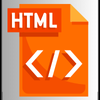JavaScript is a programming language used to add interactivity, logic, and dynamic behavior to web pages. It can modify HTML and CSS, respond to user actions, communicate with servers, and power both frontend and backend applications.
What is JavaScript ?
JavaScript is a high-level, interpreted programming language used to create dynamic and interactive behavior on websites. It runs primarily in the browser but can also run on servers through environments like Node.js.
JavaScript Example:
Basic example showing how JavaScript interacts with HTML.
HTML:
<button id="btn">Click me</button>
<p id="message"></p>
JavaScript:
document.getElementById("btn").addEventListener("click", function () {
document.getElementById("message").textContent = "Button clicked.";
});
Effect: When the button is clicked, the paragraph text updates automatically.
Why JavaScript is used?
Interactivity
Enables actions such as form validation, dropdown menus, sliders, modals, and real-time input responses.
DOM manipulation
Allows scripts to read and modify HTML and CSS—adding, removing, or changing elements without reloading the page.
Event handling
Responds to user actions such as clicks, keypresses, scrolling, and mouse movements.
Asynchronous operations
Handles background tasks through AJAX, Fetch API, and promises, enabling dynamic content loading without full page refreshes.
APIs and data exchange
Communicates with servers, databases, or third-party services to send and receive data in real time.
Full-stack development
Through Node.js, JavaScript can power backend logic, APIs, servers, and database interactions.
Rich web applications
Frameworks like React, Angular, and Vue use JavaScript to build complex single-page applications.
Animation and graphics
Controls animations, canvas drawings, interactive charts, and WebGL-based 3D graphics.
Mobile and desktop apps
Technologies like React Native and Electron use JavaScript to build cross-platform applications.
Summary:
JavaScript provides the logic and interactivity that transform static web pages into dynamic, responsive, and functional applications for browsers, servers, and multiple device platforms.
FAQ Section:
What is JavaScript?
A programming language used to create dynamic and interactive web functionality.
Where does JavaScript run?
In web browsers and on servers via environments like Node.js.
What is the DOM?
The Document Object Model; JavaScript uses it to access and modify HTML and CSS.
What are variables in JavaScript?
Containers for storing values, declared with var, let, or const.
What is a function?
A reusable block of code that performs a specific task.
What are events?
Actions like clicks, keypresses, or scrolls that JavaScript can respond to.
What is asynchronous programming?
A method allowing JavaScript to run tasks without blocking, using callbacks, promises, and async/await.
What is an object in JavaScript?
A data structure that stores key–value pairs.
What are JavaScript frameworks?
Libraries like React, Vue, and Angular that simplify building web applications.
What is the difference between JavaScript and Java?
They are unrelated languages; Java is compiled and strongly typed, while JavaScript is interpreted and dynamically typed.
Other Courses:



